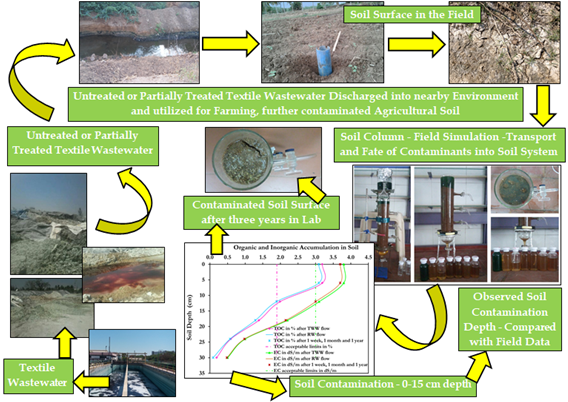
Soil was familiar earlier in the context of agriculture and food production, but industrialization contaminated soils around the world in last two centuries. Most of the contamination is due to the consequence of improper discharge of industrial wastewater and one such situation is witnessed in the agricultural land nearby textile hub of Tiruppur, Tamil Nadu in Southern India. It is essential to identify the contaminants depth in soil system before propose any in-situ remediation technique. There is no study reported so far to understand the transport and fate of organic and inorganic contaminants of textile wastewater in soil system. This paper investigates the transport and fate of textile wastewater in soil column of 32 cm height and 8 cm diameter. Detailed investigation demonstrates the removal of color 15-84%, organic contaminants 4-51% and inorganic contaminants 11-36% from wastewater after its transport into the soil. The reduced level of calcium, magnesium and potassium ions in soil and corresponding increase in wastewater reveals anion and cation exchange between wastewater and soil. Thus the results confirm the accumulation of residual textile dyes and inorganic salts in the soil and it is huge in surface soil of 0-15 cm depth, further it requires immediate restoration.
Total file downloads: 7